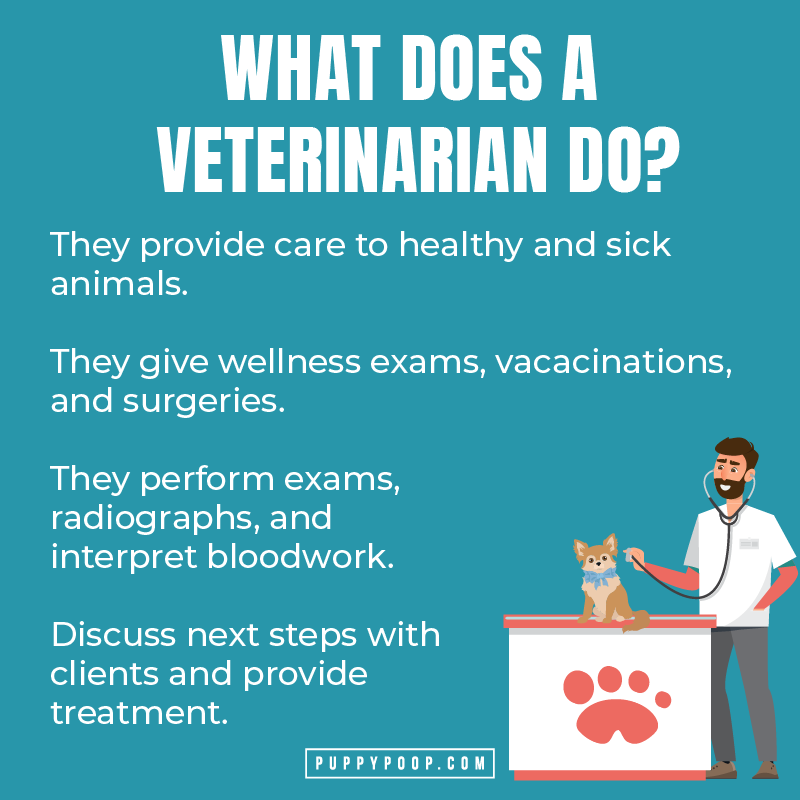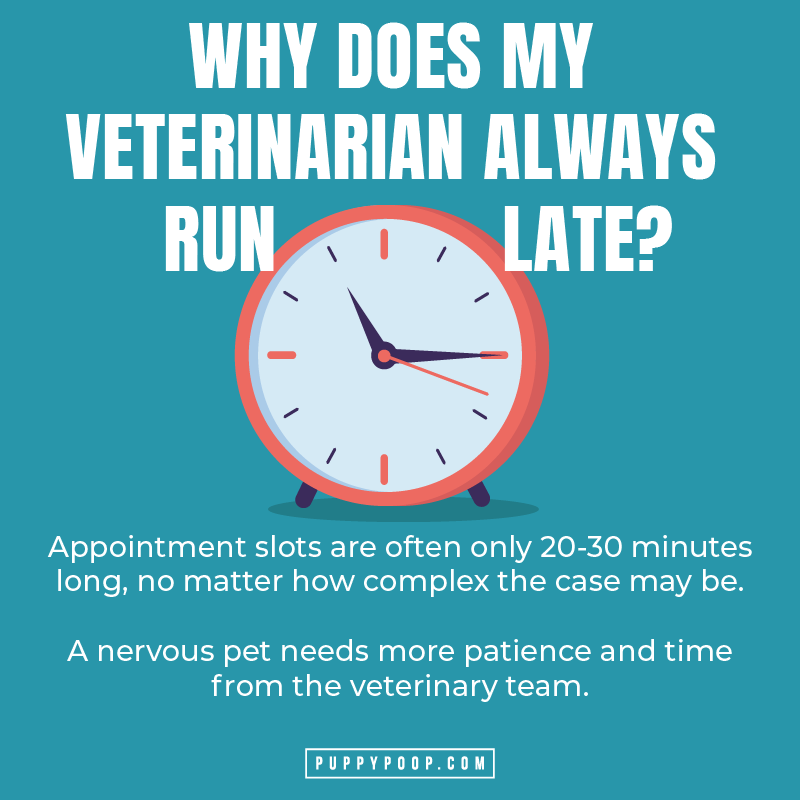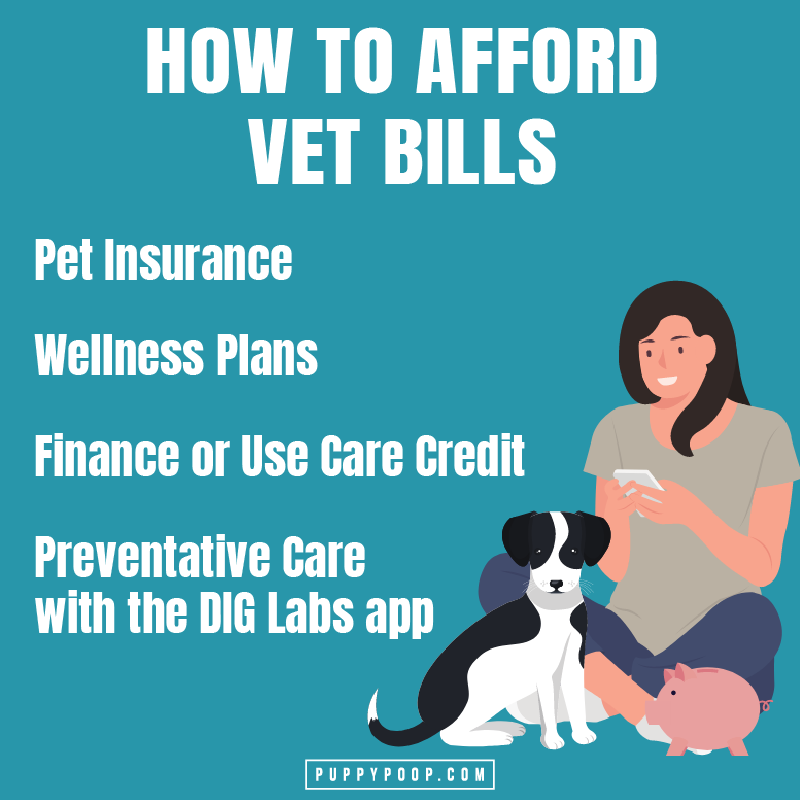Have you ever avoided taking your pet to the vets because you were worried the bill was going to be too expensive? You’re not alone! Many pet parents avoid going to the vets for routine visits and preventative care. This may be due to worrying that they won’t be able to pay the bill.They may even put off seeing a vet when their pet is ill. This leads to even higher bills later on. These concerns and high bills often lead to a negative perception of veterinarians. A better understanding of the veterinary profession and the challenges that veterinarians face may help provide clients with more empathy for veterinarians.
What does a typical day look like as a veterinarian?
Being a veterinarian does not involve playing with cute puppies and kittens! Adorable animals visit the vets every day. But they often aren’t there to play. The veterinary office can be a scary place for our pets, especially if they have a digestive issue or aren’t feeling well. They may think of vets as the ‘bad guys’, even though veterinarians are there to help.

Veterinarians provide care to both healthy and sick animals. They spend a lot of their time focusing on preventative health. This includes wellness exams, vaccinations, and avoiding worms in dogs. Routine surgeries include spays, neuters, and dental cleanings. They also perform physical exams, radiographs and interpret blood work. Furthermore, they discuss the next steps with clients, provide treatment, and much more. These tasks may need to be performed during a 20 minute exam slot. This means there can be a lot to squeeze into a very short appointment! While preventative care is critical, veterinarians often spend time helping sick animals. Some examples of sick cases may include: digestive issues like dog diarrhea, worms found in dog poop, and vomiting as well as cancer and other severe illnesses. As I’m sure you can imagine, seeing animals when they are unwell, no matter how big or small the issue, can be heart-wrenching.
What Challenges Does a Veterinarian Face?
Helping animals and their parents can be a lot of fun and be very rewarding. But veterinarians also face daily challenges. All day long, they make difficult decisions about diagnosing and treating their patients. Because our pets can’t tell us what’s wrong, these decisions are that much more demanding. Sometimes vets are even expected to solve a problem without proper diagnostics. These complex cases create long workdays for veterinarians. This is especially true as the days don’t end when they go home. They often spend time researching so that they can provide the best care possible.
Veterinarians can experience heart-wrenching cases every day. Most of these cases involve severely sick animals. But sometimes they may also involve neglect or abuse. Vets also often have to have difficult discussions with pet parents. These are often about poor prognosis. Not only that, a veterinarian may have to euthanize multiple beloved family pets in one day. While this may be in the best interest of the pet’s quality of life, it never gets easier. Having empathy for veterinarians who deal with those loses can show you understand their job and it’s hardships.
Why Does My Veterinarian Always Run Late?
One of the challenges veterinarians face is their hectic workday.. Appointment slots are often only 20-30 minutes long, no matter how complex the case may be. Getting every animal to behave perfectly in this short period can be challenging. This is understandable since they’re usually afraid when they come to the vets.

A nervous pet needs more patience and time from the veterinary team. If a veterinarian were to rush, they would worsen that pet’s anxiety. Timid animals may also bite or scratch to protect themselves. This means the veterinary staff need to work slowly with these animals. This is to protect themselves from injury. Situations like this occur throughout the day. It’s no wonder veterinarians often run behind schedule! It’s not just the comfort and safety of the animals the veterinarians need to consider. They must also support the pet parents. They need to clearly explain the diagnosis and work with clients to develop a treatment plan.
Why Does My Veterinarian Charge So Much?
Payments to a veterinary practice do not go to the veterinarian alone. A lot of your payment actually goes to running the veterinary practice.
The costs of veterinary practices can include:
- Payroll: One of the highest costs in a veterinary practice. This includes the wages of veterinarians, veterinary technicians, assistants, receptionists, and managers.
- Specialty equipment, laboratories, and surgeons: These can increase the quality of care but can also increase the cost.
- Medicines and supplies
- Maintenance of medical equipment
- Maintenance of the facility and utility bills
Rising veterinary tuition costs also play a role in increased veterinary bills. Veterinarians spend four years in veterinary school after completing a college degree. This leads to increased student debt. For example, student debt for 2019 graduates ranged between $160,000 and $280,000. Some had an even higher debt load. These challenges that veterinarians face make it difficult to lower costs. Understanding this can help clients have empathy for veterinarians.
How Can I Afford My Veterinary Bills?
Owning an animal is a significant responsibility. It involves a large amount of time and money for many years. But pet insurance may help with bills. This option is underused. Pet insurance is only used by 2% of pet parents. Yet, it can provide support for emergencies and preventative health costs. Pet parents may be able to worry less about the costs of veterinary visits with pet insurance. This will allow them to get earlier treatment for their pets. This will lead to decreased veterinary bills in the long run.
Another option is that veterinary offices may offer wellness plans for a monthly fee. Often, these plans include a certain number of exams per year. They can also make paying for vaccinations and monthly preventatives more manageable. These include heartworm and flea prevention.

Although not ideal for many, some veterinary offices also offer healthcare financing. One common company, Care Credit, offers clients a way to afford their expensive veterinary bills. This gives clients the chance to pay back their veterinary bills monthly. Sometimes these plans can even offer no interest for a certain number of months.
Using preventive tracking and monitoring tools, like the DIG Labs Digestive Health app, helps to catch emergencies before they become ER visits and work to guide you to make the most of your veterinarian visit with expert tips and recommendations.
Did You Know That The Veterinarian Profession Has One of The Highest Suicide Rates?
Studies have shown that veterinarians are 2.7 – 3.5 times more likely to commit suicide. This is compared to the general population. This higher suicide rate among veterinarians is down to many factors. Veterinarians may face emotional distress, anxiety, and depression. Perfectionism is also common amongst vets, and this may contribute to psychological distress. This is because perfect diagnostics and treatments are not always affordable for pet parents.
Misconceptions
Veterinarians are commonly misrepresented as money-hungry and heartless. These views often arise when veterinarians are unable to treat animals for lower or no cost. But money is usually the last reason they become vets. It’s a vocation rather than a job – a passion for those that love animals. Many have even had this life-long dream since they were a child. Veterinarians want to help their communities, both animals and people. They want to save animals’ lives, and many likely wish they could help animals for free. By having empathy for veterinarians you can show you support them.
It’s a vocation rather than a job – a passion for those that love animals.
These misconceptions can create an increased level of emotional distress for veterinarians. If pet parents can’t afford treatment, they may be negative about their veterinarian online. Often, the veterinarian has performed the appropriate care but could not do everything due to lack of finance. Situations like this would be difficult for anyone to handle. But it is even more stressful when an animal’s life is on the line.
Client expectations and complaints may contribute to the high suicide rates among veterinarians. But they’re not the only challenge veterinarians face. Vets also experience long work hours, on-call shifts, and a poor work/home-life balance. Those that run practices also have to deal with managerial responsibilities. Euthanasia procedures also bring more grief to veterinarians. Each one of these challenges plays a role in the stress that veterinarians face on a daily basis. They are what can contribute to the high suicide rate of this profession.
Empathy for Veterinarians After Putting an Animal to Sleep
Veterinarians may experience this feeling every workday. Pets may need to be euthanized to end pain or suffering. Sometimes they may be brought in after passing away at home. This feeling, along with other work stress, can lead to compassion fatigue.
Compassion fatigue often happens in jobs involving caring for others. For vets, it is due to the traumatic events that their patients and pet parents experience. This can lead to emotional exhaustion, distress, and burnout.
In a rewarding profession, veterinarians still face many challenges. These challenges are not always spoken about. The high suicide rate is also often overlooked. Greater empathy for veterinarians is needed. It might help lessen the negative feelings we sometimes have before our trips to see the vet.
Get the DIG Labs App
Download the free DIG Labs Digestive Health Tracker to get personalized insights and recommendations for your dog based on their stool.

